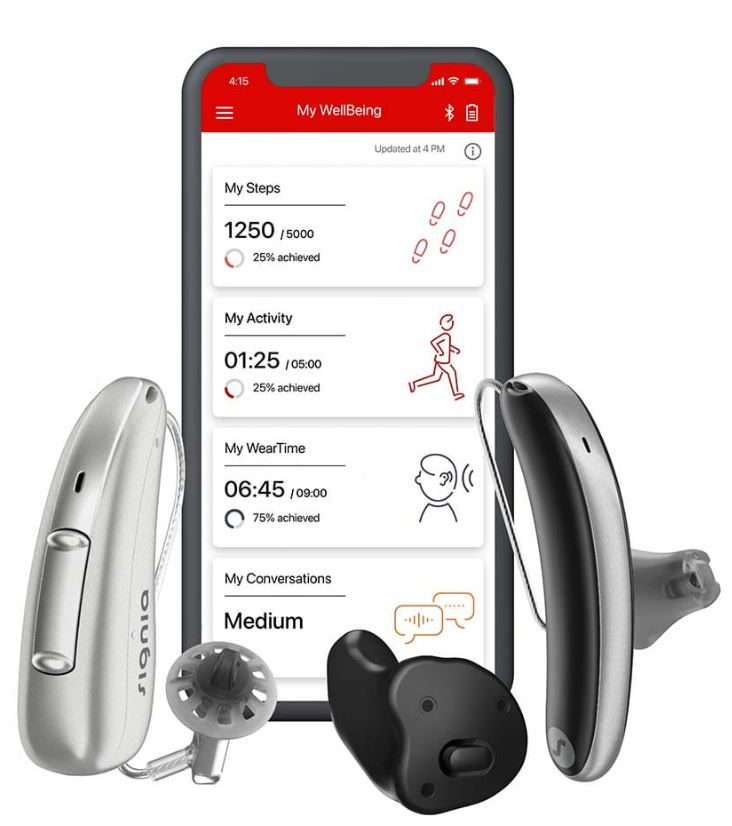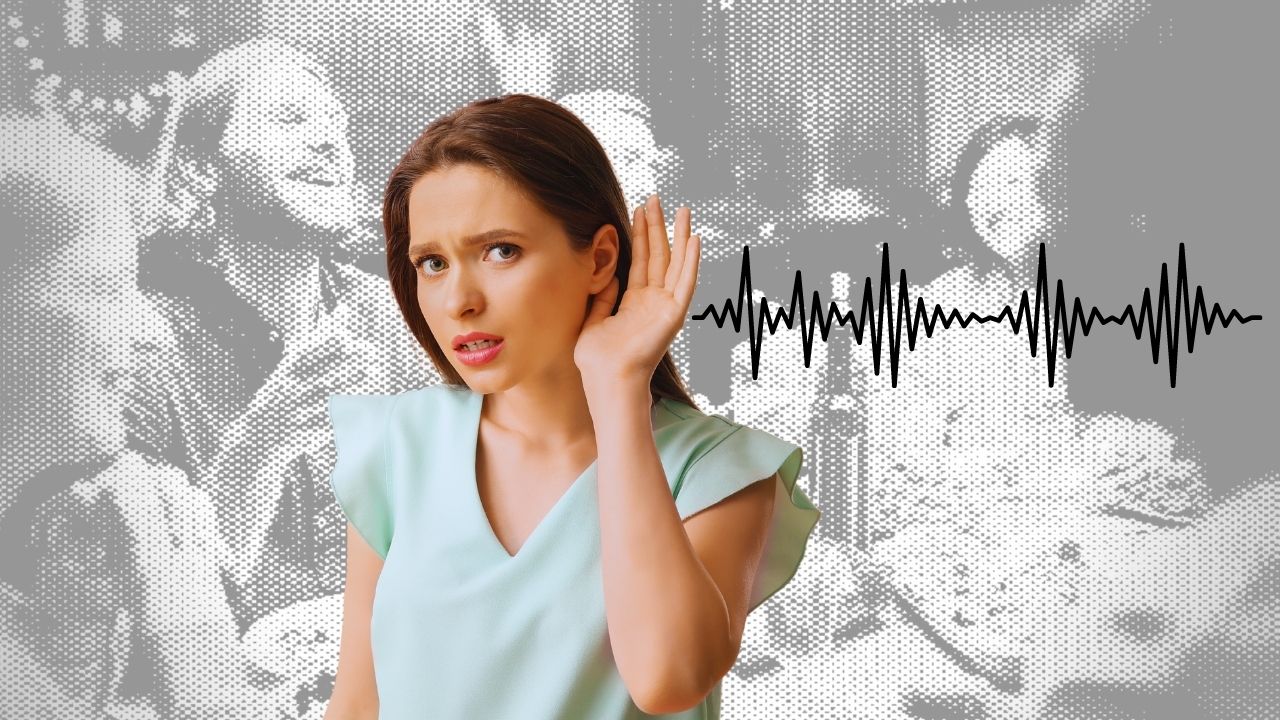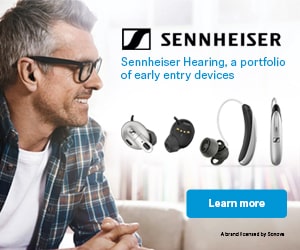by Brian Taylor, AuD, Signia

Brian Taylor, AuD
We know a lot about the signs of hearing loss. As an audiologist, I’m often told, “I can hear people talking to me, I just can’t understand them” Or “I have trouble following conversations at parties.”
Of course, during the pandemic, far fewer people complained of these symptoms because there weren’t any parties. And for long stretches, most of us were isolated in our homes and the only talking we did was with our “bubble” groups. There was no chatting across the table in a noisy restaurant, no business meetings in conference rooms or hotel ballrooms, and no cheerful banter at crowded social events. For many, there were no perceptible signs of hearing loss.
According to a study by the University of Michigan and Apple, the pandemic’s stay-at-home orders cut peoples’ exposure to noise by about half. Good news for many with hearing loss, who commonly struggle to hear in the presence of noise. But now, on the other side of those quieter months, the volume has returned to normal. We can expect those struggling to hear to struggle anew.
And if they weren’t struggling to hear in noise before, there are signs that many are struggling now. Having lived in relative silence for so long, observers have noticed that a good amount of people say they’re more sensitive to sound, from music to loud conversations, and audiologists have begun weighing in.
The fact is, we as hearing care professionals (HCPs) can expect to deal more with patients who have difficulty hearing in noisy situations as the public grows more aware of the issue.
Challenges of Unaddressed Hearing Loss
A key theme from this year’s World Hearing Day was making hearing care more accessible. The World Health Organization (WHO) understands that not enough people take care of their hearing nor seek hearing aids when they need them. And hearing loss can sneak up on people: The WHO estimates that worldwide, over a billion people aged 12 to 35 risk hearing loss because of exposure to loud sounds and music.
Mild to moderate hearing loss may seem tolerable, but it can manifest itself in ways that impact people’s ability to understand or communicate. This is the hearing loss that causes sufferers to miss conversations or withdraw from noisy situations. Rather than struggle to hear in noise, they tend to isolate themselves, a condition that’s been shown to affect mental and physical health.
Hearing technology has come a long way in its ability to improve hearing in noisy situations. From directional microphones to advanced signal processing, today’s hearing aids can discern unwanted ambient noise from speech. They can tell where the noise is coming from and diminish its impact. Similarly, they can sense where desired sound is coming from and enhance it.
 At Signia, engineers have developed what’s called Own Voice Processing (OVP), now in its second version, which learns to recognize when the wearer is speaking, particularly in noisy situations. Not only does OVP process the speaker’s voice to sound more natural, it does so separately from all the background noise, using unique Augmented Focus™ split-processing technology that processes speech and background noise separately to create a clear contrast between the two. This means the wearer actually can hear people talking to them at parties and feel confident in social situations. OVP 2.0 even supports a new My WellBeing smartphone app that helps people understand how engagement in regular conversation leads to a healthier life.
At Signia, engineers have developed what’s called Own Voice Processing (OVP), now in its second version, which learns to recognize when the wearer is speaking, particularly in noisy situations. Not only does OVP process the speaker’s voice to sound more natural, it does so separately from all the background noise, using unique Augmented Focus™ split-processing technology that processes speech and background noise separately to create a clear contrast between the two. This means the wearer actually can hear people talking to them at parties and feel confident in social situations. OVP 2.0 even supports a new My WellBeing smartphone app that helps people understand how engagement in regular conversation leads to a healthier life.
Advanced Processing to Benefit More Users
The challenge, then, is delivering this technology to those it would benefit. Among the first steps is greater awareness of hearing loss in general and of hearing in noise, specifically. Initiatives like World Hearing Day shine a light on the pervasiveness of hearing loss, and as health regulators begin taking steps to make hearing technology more widely available, and as people gather again in crowds and struggle to engage, we can expect more interest in solutions.
Technologies like OVP and split processing are indeed innovative with advanced capabilities. But what does a person who can’t make out what their partner is saying in a noisy restaurant care about advanced processing? They care about hearing and intelligibility, regardless of the aids they (hopefully) eventually adopt.
In a recent study, researchers proved this point. They asked hearing aids wearers what mattered most to them, from basic, entry-level users to wearers of premium, advanced hearing aids. Across all technology levels, wearer’s top preferences were intelligibility and comfort — even above ease of use, connectivity, and other common features. The latter (comfort) helps ensure they’ll wear them as often as needed; the former (intelligibility) addresses the growing challenge — and related risks — of being able to hear in noisy situations.
“Hearing care is wellness care. To help hearing loss sufferers thrive in noise and enjoy full lives, the technology to achieve those ends should be more widely accessible.”
Signia has taken that challenge seriously, recently making its most advanced Augmented Xperience (AX) processing platform available across more price points and performance levels. To accommodate as many types of patients as possible, Signia continuously develops its AX platform, and, since its release, has added 6 new enhancements. So as HCPs begin to see more patients who are struggling with the reintroduction of noise to their daily lives, they’ll have more options for creating the hearing experiences that foster greater social engagement and minimize the risks of social withdrawal.
We knew it was a noisy world before the pandemic. Months of relative quiet served to make the noise more pronounced. Modern hearing aids will help more people hear through the noise.
About the Author
Brian Taylor, AuD, is Senior Director of Audiology at Signia, a division of WS Audiology. He is also the editor of Audiology Practices, a quarterly journal of the Academy of Doctors of Audiology, editor-at-large for Hearing Health and Technology Matters and adjunct instructor at the University of Wisconsin.







